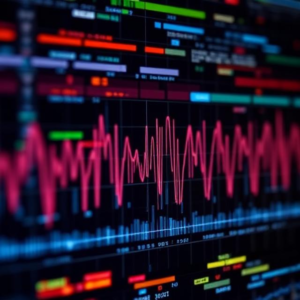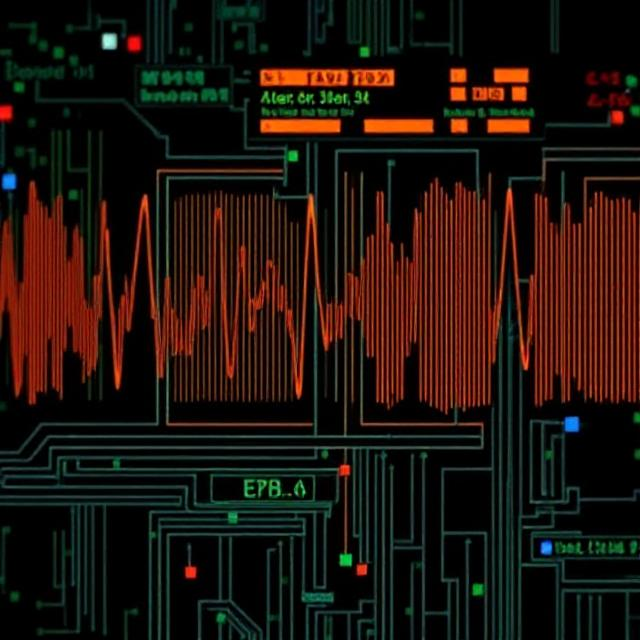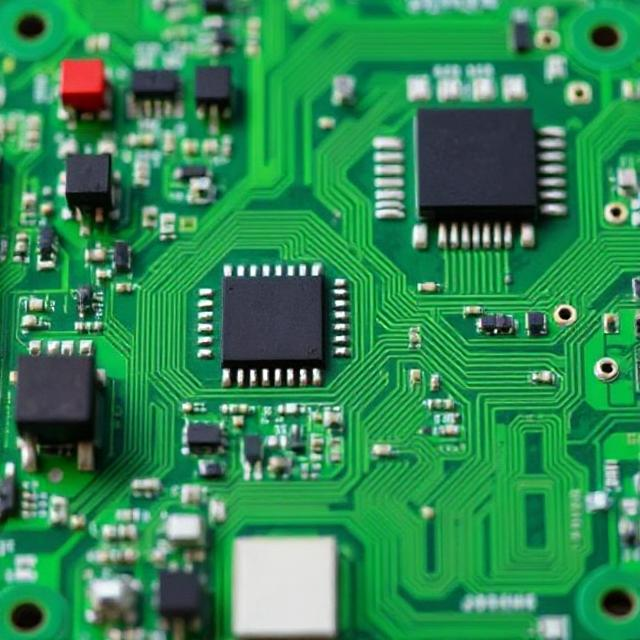What is Digital Signal Processing (DSP)?
Digital Signal Processing (DSP) refers to the manipulation of signals (such as sound, images, or sensor data) after they have been converted into a digital format. Unlike analog signal processing, which works with continuous signals, DSP works with discrete signals—those represented as sequences of numbers that describe the signal at specific points in time.
At its core, DSP is all about analyzing, transforming, and improving signals in ways that are useful in a variety of applications like communications, audio processing, medical imaging, radar systems, and much more.

Basic Concepts in DSP:
- Signal:
- A signal is simply any time-varying quantity that carries information. Examples include sound waves, images, video, and sensor readings.
- In DSP, these signals are usually discrete (measured at specific intervals) after being converted from analog (continuous) signals.
- Sampling:
- Sampling is the process of converting an analog signal (continuous) into a digital signal (discrete) by measuring its value at discrete intervals (called samples).
- Example: If you record an audio signal, you take snapshots of the sound wave at regular intervals (e.g., 44,100 samples per second in standard CD audio).
- Quantization:
- After sampling, the next step is quantization—the process of assigning a finite number of possible values to each sample.
- For instance, the sound signal might be quantized into 16-bit values, meaning each sample can have one of 65,536 possible values.
- Discrete-Time Signal:
- The result of sampling and quantization is a discrete-time signal, which is a series of numbers representing the signal’s amplitude at specific points in time.
- These numbers can then be processed by a digital signal processor (DSP) or a computer.
Key Techniques in Digital Signal Processing:
- Filtering:
- Filtering is one of the most common techniques in DSP. It is used to modify or remove unwanted parts of a signal, such as noise or distortion.
- There are two types of filters:
- Low-pass filters: Allow low-frequency signals to pass through and attenuate (reduce) high-frequency signals. This can be used to smooth out a noisy signal.
- High-pass filters: Allow high-frequency signals to pass through and attenuate low-frequency signals.
- Band-pass filters: Allow only signals within a specific frequency range to pass.
- Example: In audio processing, a low-pass filter can be used to remove high-pitched noise from a voice recording.
- Fourier Transform:
- The Fourier Transform is a mathematical tool used in DSP to break down a signal into its constituent frequencies. It converts a time-domain signal (which shows how the signal varies over time) into a frequency-domain representation (which shows how the signal’s energy is distributed across different frequencies).
- The Fast Fourier Transform (FFT) is a fast algorithm for computing the Fourier Transform.
- Example: In audio processing, you might use the Fourier Transform to analyze the frequency content of a sound and then apply filters to enhance or suppress specific frequencies.
- Convolution:
- Convolution is a mathematical operation used to combine two signals. In DSP, it’s used to apply a filter to a signal. When you convolve a signal with a filter, you’re essentially combining the input signal with a “template” or “kernel” (the filter), which modifies the original signal.
- Example: Convolution is used in image processing to apply effects like blurring or sharpening.
- Sampling Theorem (Nyquist-Shannon):
- According to the Nyquist-Shannon Sampling Theorem, in order to accurately represent a continuous-time signal as a discrete signal, the sampling rate must be at least twice the highest frequency present in the signal.
- For example, if an audio signal has frequencies up to 20 kHz (the upper limit of human hearing), it should be sampled at least at 40 kHz (which is why CD audio uses a 44.1 kHz sampling rate).
- Quantization Error:
- Quantization error occurs when a continuous signal is mapped to discrete values during the quantization process. This error is the difference between the actual signal value and the quantized value.
- While the error is typically small, it can introduce distortion into the signal. To minimize this, a higher bit-depth (e.g., 16-bit or 24-bit) is often used in applications like audio.
- Compression:
- Compression reduces the size of a signal or data for more efficient storage or transmission. In DSP, there are two types:
- Lossless Compression: The signal is compressed without losing any information (e.g., FLAC for audio).
- Lossy Compression: Some information is discarded in a way that is less noticeable to the human ear or eye (e.g., MP3 for audio, JPEG for images).
- Example: Audio files like MP3 or AAC use DSP techniques to reduce file size while maintaining audio quality.
- Compression reduces the size of a signal or data for more efficient storage or transmission. In DSP, there are two types:
Key Tools in DSP:
- Digital Signal Processor (DSP Chip):
- A digital signal processor (DSP chip) is a specialized microprocessor designed specifically to perform fast signal processing operations. It’s optimized for mathematical operations like addition, multiplication, and division, which are essential in DSP.
- DSP chips are widely used in real-time applications like audio processing, speech recognition, telecommunications, and video encoding/decoding.
- Software for DSP:
- DSP is often implemented using software on a computer or in embedded systems. Some popular tools and programming languages for DSP include:
- MATLAB: A powerful language and environment for numerical computation, often used for signal processing simulations and prototyping.
- Python: Libraries like NumPy and SciPy are commonly used for implementing DSP techniques.
- LabVIEW: A graphical programming language for signal processing and control systems.
- DSP is often implemented using software on a computer or in embedded systems. Some popular tools and programming languages for DSP include:
- Real-Time DSP:
- In some applications, like audio effects processing or telecommunication systems, signal processing must happen in real time—meaning the system must process the signal without delay.
- Real-time DSP systems ensure that signals are processed quickly enough to meet time-sensitive requirements.
Applications of DSP:
- Audio and Speech Processing:
- Noise Reduction: DSP techniques can remove background noise from recordings or phone calls.
- Speech Recognition: DSP algorithms help convert spoken language into text or control systems (like voice assistants).
- Audio Effects: DSP is used to create effects like reverb, echo, and equalization in music production.
- Image and Video Processing:
- Image Enhancement: DSP is used in applications like improving the sharpness, contrast, or color of images.
- Video Compression: Video streaming services (like YouTube or Netflix) use DSP to compress video files, making them easier to stream.
- Object Detection: DSP algorithms help identify and track objects within images or video feeds, used in fields like surveillance and autonomous driving.
- Telecommunications:
- DSP is critical in modulation and demodulation of signals for transmitting data over the air (e.g., in mobile phones, Wi-Fi routers, and satellite communication).
- Error Correction: DSP techniques help correct errors that occur during data transmission, ensuring the integrity of the signal.
- Radar and Sonar:
- Signal Detection: DSP is used to detect objects based on radar or sonar reflections, such as in weather radar systems or underwater sonar used by submarines.
- Medical Imaging:
- MRI, CT, and Ultrasound: DSP techniques are used to process the signals captured in medical imaging to create detailed images of the inside of the body, aiding diagnosis and treatment.
- Control Systems:
- DSP is used in feedback systems to monitor and adjust the behavior of machines, from industrial automation to consumer electronics like washing machines or air conditioners.
Advantages of DSP:
- Precision and Accuracy: Digital signals are less prone to distortion and noise compared to analog signals, allowing for more precise manipulation.
- Flexibility: DSP algorithms can be easily modified or updated through software, which is much easier than changing hardware-based systems.
- Real-Time Processing: DSP systems can process signals in real-time, which is essential for applications like audio processing or communications.
- Cost-Effective: Many DSP applications can be implemented in software, reducing the need for expensive hardware.
Challenges in DSP:
- Computational Load: Some DSP algorithms, like those used in video processing or real-time audio effects, can be computationally intensive and require high processing power.
- Latency: In real-time DSP systems, reducing latency (delay between input and output) is crucial. Too much delay can negatively impact applications like live audio processing or communication.
- Aliasing: When signals are sampled at too low of a rate (below the Nyquist rate), high-frequency components can cause distortion, a phenomenon called aliasing. This must be carefully managed in DSP applications.
In Summary:
Digital Signal Processing (DSP) is a powerful technique that enables the manipulation of signals (such as sound, images, or data) after they’ve been converted into a digital form. By applying algorithms to transform and analyze these signals, DSP can improve











